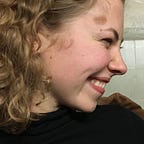Leading Societal Transformation in Finance and Sustainability
In June 2019, the Presencing Institute concluded its first annual delivery of u.lab-S: Societal Transformation, a global initiative in which 300 teams from 35 countries are simultaneously tackling social challenges using collective systems mapping and design processes.
This week, we feature one team which worked under the acupuncture point of Finance and Sustainability. This team asked big questions around how the finance world can work towards reaching the UN’s 17 Sustainable Development Goals.
Turn The Tide
Geneva
On the 8th of October 2019, the Turn the Tide (TTT) u.lab-S team made a real life impact in Geneva: they offered an experimental workshop during the Building Bridges Week which they called Detect & Leverage Trigger Points for SDG Finance. Nearly 30 participants joined the workshop. Some participants arrived with specific questions and intentions around, for example, financing development challenges. Others came because they wanted to learn something new. Together, they spent 2.5 hours addressing the central question of how the two sides of Lake Geneva — finance and the United Nations — could be connected through the building of bridges.
They used Social Presencing Theater (SPT), a methodology developed by Arawana Hayashi. One way of practicing SPT is through 4D Mapping. 4D Mapping is a tool through which a system can reflect back on itself and see itself. Through an embodied sculpture, where different participants embody different roles of the system, the system has the chance to feel itself and sense its emerging future.
It works something like this: each participant is either a player or an observer. Both roles are important. The player takes on a role of the system. Some examples of these roles were: banker, community leader, planet earth, consultant, etc. These players then embody their roles in the space, one by one. After one player finds his/her place in relation to the space and to one another, they utter one sentence from the “I” perspective, voicing that which this shape, or this position in the sculpture, has to say. During the workshop, these sentences from the first sculpture seemed to revolve around the phrase “I want”.
Now, collectively, the players begin to move places. Together they shift the sculpture until it feels right. This is the second sculpture: the emerging reality. Each player says their ‘name’, or what their role is, and offers one further sentence. During the workshop, these second sentences shifted from the frequent use of “I want” to a sense of openness and connectedness. Many of these sentences revolved around the thought of “we are connected”.
In other words: several players, in the first sculpture, found themselves focusing on themselves, be it how they may help others or how they can get the most benefit for themselves. The fundamental shift which took place from the first to the second sculpture was from this place of thinking about the self to an expanded thinking: thinking about the whole. Suddenly, the players began to vocalize (and embody) that it’s not about me, I am part of a whole which I can influence through my action.
Some participants observed the complexity and interconnectedness of the system: when one part of the system moves, the other parts are all affected. In this way, every action carries weight and triggers reaction within the system. New insights around the complexity, pressure, and uncertainty of the system were made visible in the dynamics of the sculpture and in the challenges which the participants faced. Some of these frustrations were due to the hierarchy of voices, where the marginalized did not seem to have a role in the system. Yet even just embodying a role challenges the participant to step out of their comfort zone. Considering most, if not all, of the participants had never done 4D Mapping before, this step out of the comfort zone resulted in some valuable insights.
In looking forward, TTT team is asking itself how to connect the insights from this experimental workshop with concrete action and change. One idea is to use the methodology in the context of a specific field case. The success of this experimental workshop shows: here lies potential. We can’t wait to see where the team will go from here!
We invite you to join us in this capacity-building programming through the Societal Transformation Lab. Together, we’re designing and building a global eco-system for profound societal and civilizational transformation. Read more about the innovation lab here and if you have taken u.lab-1x, consider joining us for u.lab-2x, which will run from February to May of 2020.
